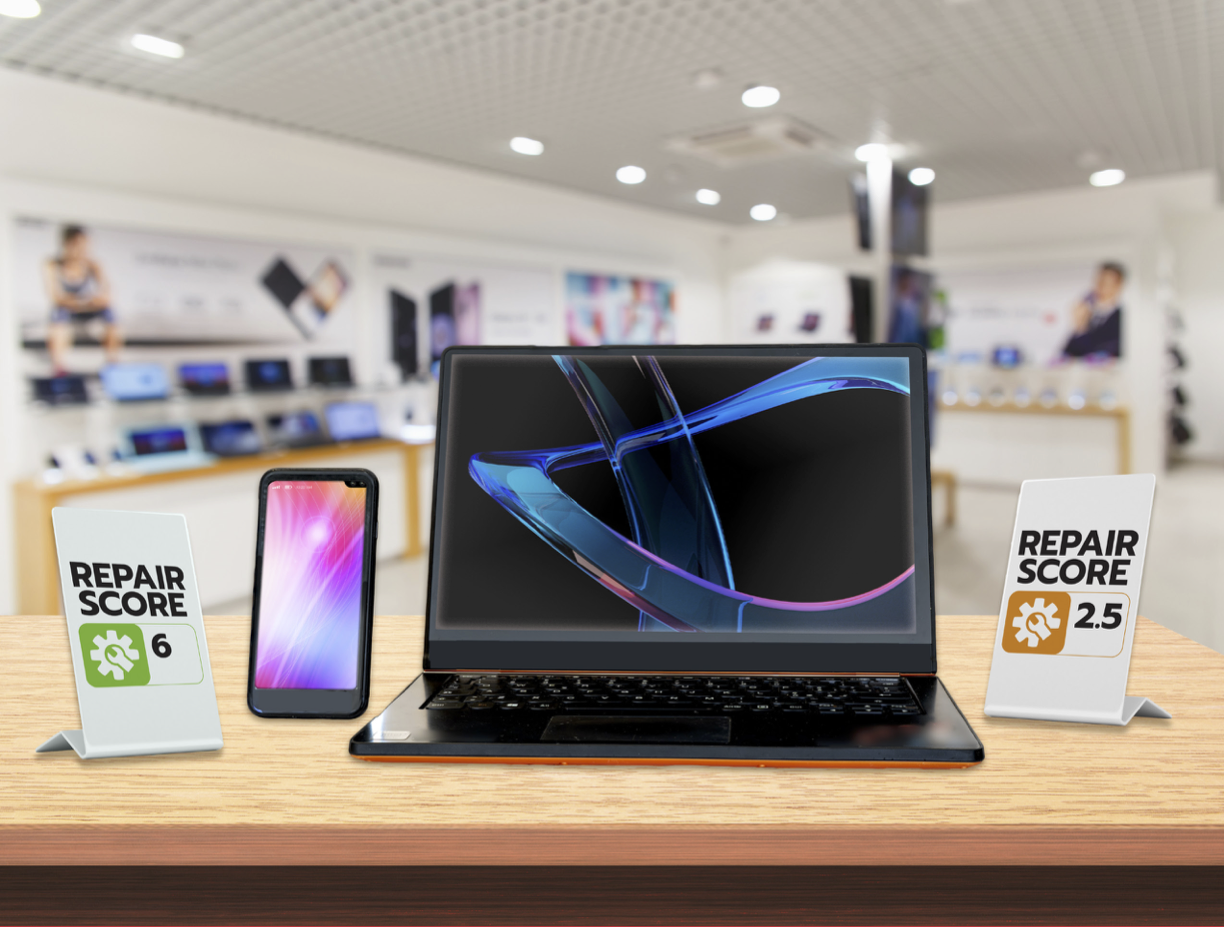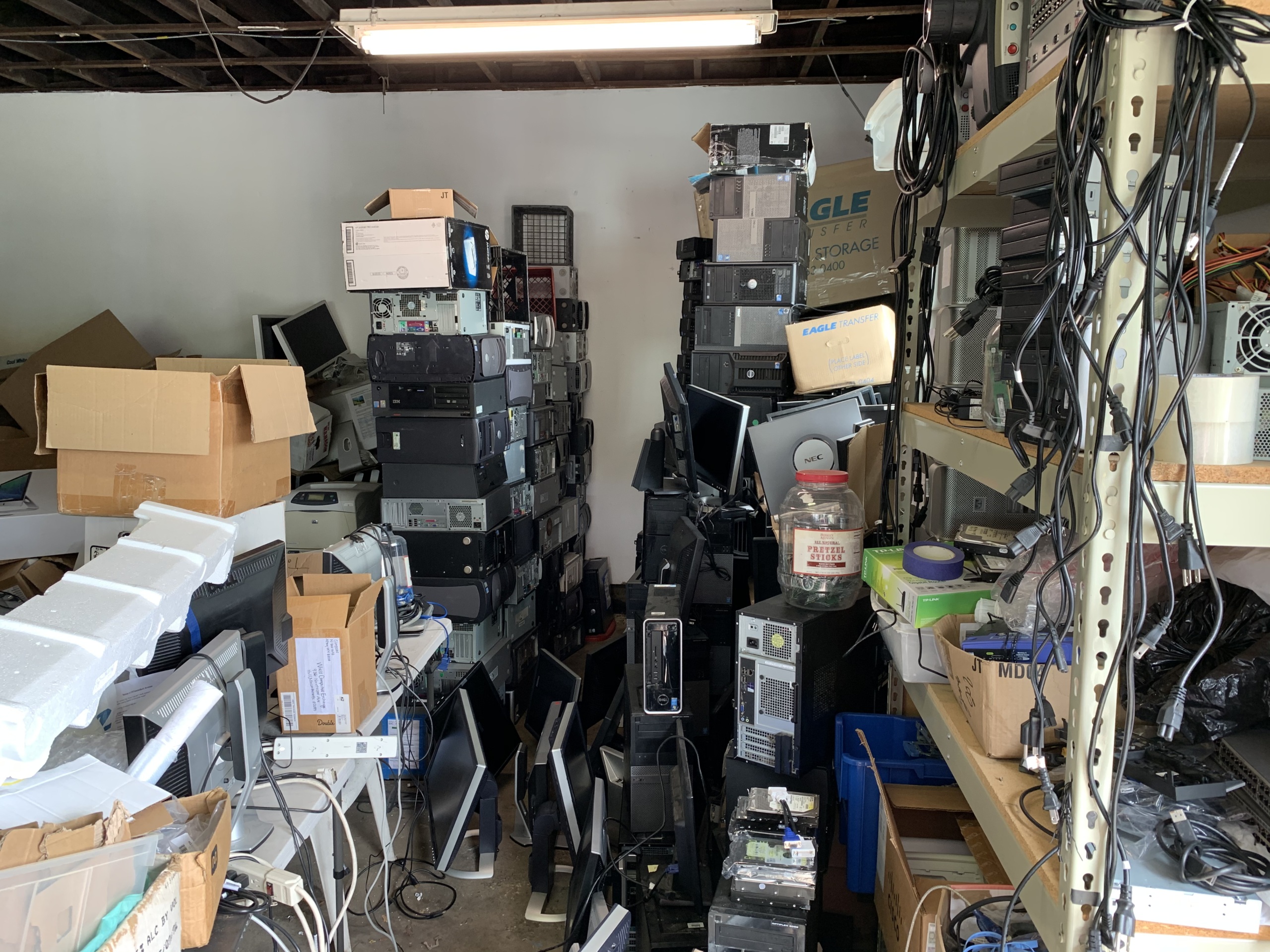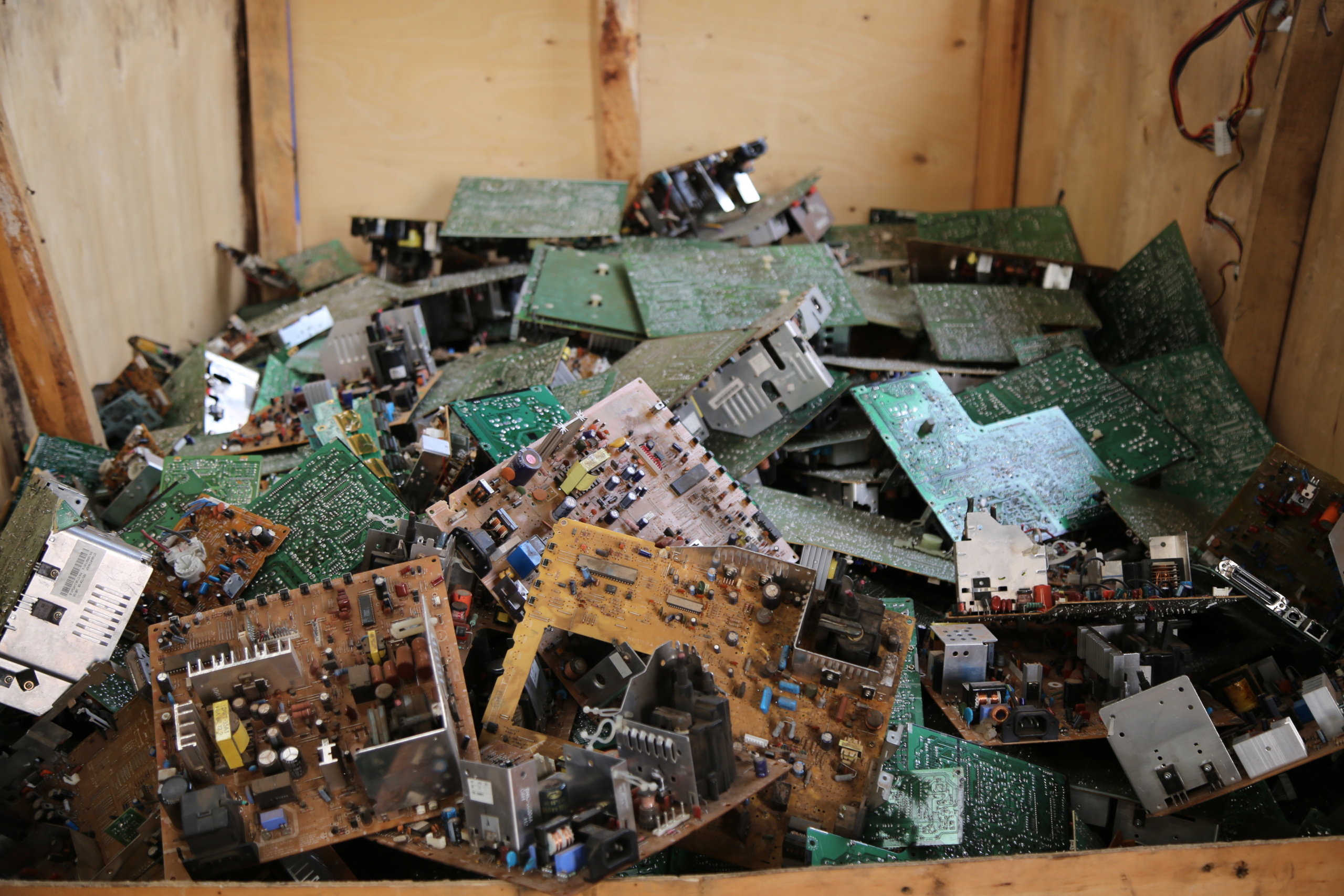
Support builds for repair scores in New York
A bill in the New York Assembly and Senate would bring repair scores to New York, a great way for consumers to select more fixable electronics. Advocates and repair professionals spoke about why they support the bill.

Nobody walks into an electronics store and thinks, “I want to buy something that can’t be fixed if it breaks.” But how are we supposed to know what is repairable and what isn’t?
It’s a common occurrence. You buy an electronic you’re looking forward to using for a long time. Life happens and something breaks, and then you find that for whatever reason – missing parts, a glued-on screen, or something else – it can’t be fixed at all. We want products that are designed to last, but there’s just no way of knowing if what we buy can be repaired.
A new bill in the New York legislature seeks to address that. If passed, manufacturers would have to give retailers a 1-10 score of how repairable their electronic products are, to be displayed at the point of sale. This would help us choose longer lasting products, a win not only for our wallets but also the planet, as it would help to reduce electronic waste.
U.S. PIRG Education Fund recently held a press conference in support of this bill at the state Capitol building in Albany. Alongside letters of support from 33 independent retailers and repair professionals in the state, we released our annual “Failing the Fix” report, which not only provides information on the most repairable consumer electronics, but also gives an example of what repair scores could look like.
Testimony from Christopher Gindi

‘Failing the Fix’ scorecard grades Apple, Samsung, Google, others on how fixable their devices are
Christopher Gindi, owner of Computer Crisis – a company specializing in company repairs, upgrades and network solutions – and Robert Remillard, owner of White Wolf Computer, both spoke about why they support repair scores for New York. You can watch Christopher’s testimony below, and read the full transcripts from both Robert and Christopher.
New York Assemblymembers Robert Carroll and Patricia Fahy also expressed their support for the bill.
“PIRG is doing great work when it comes to holding electronics companies to account on the repairability of their products,” said NY Asm. Robert Carroll, prime sponsor of the repair scores bill. “Repair scores not only help inform consumers but also can play an important role in protecting human health and the health of the planet by reducing e-waste. I am proud to be the prime sponsor in the Assembly of A8434/S8332, which would require NY to develop a repair score rating system for electronics like smart phones and computers and retailers to prominently display such ratings.”
“When New York passed its first-in-the-nation Right to Repair law, it began a movement that’s seen several states go beyond what we enacted,” said NY Asm. Patricia Fahy, sponsor of New York’s Digital Fair Repair Act. “In just a few years, millions of Americans now enjoy a tangible ‘right to repair’ that reduces waste, addresses tech affordability, and most importantly, protects consumers. With this legislation, New Yorkers will know which devices are more repair-friendly and drive competition in the industry more broadly.”
See a video of Christopher’s testimony below, as well as transcripts from Robert and Christopher.
Appendix: Transcripts from Christopher Gindi and Robert Remillard
Testimony from Christopher Gindi (Transcript)
Hello fellow electronic device users, thank you for lending me your attention for a just a moment. I am Christopher Gindi, the proud owner of COMPUTER CRISIS, a small business serving the greater capital region of upstate NY. We specialize in computer repairs, upgrades, networking solutions and providing expert advice on electronic purchases to individuals and small businesses when it’s time to upgrade.
I am here before you as both a business owner and a representative of consumers who rely on electronic devices everyday, at almost all times. Today, I want to bring attention to a proposed piece of legislation that, if enacted, could significantly benefit businesses like mine and consumers like you across the state.
Every consumer, all of us, desire our electronic devices to have exceptional repairability, yet we often find ourselves at the mercy of manufacturers’ decisions. This legislation proposes that manufacturers of electronic devices include a repairability score from an independent third party on the product’s packaging or readily accessible for consumers.
Now, why should the average consumer, perhaps not deeply familiar with technical details, support repairability scores? Let’s break it down.
At the core of this proposed legislation is the concept of repairability—a device’s ability to be easily disassembled, repaired with common tools, and be overall assembled in such away that access to critical components is not difficult. As a business owner, I understand the importance of a repair ecosystem, where instructions and replacement parts are readily available, ideally from the original manufacturer.
This legislation addresses a critical need. Most consumers lack the means to evaluate repairability before making a purchase. Repairability scores simplify this complex issue, providing consumers with a straightforward 10-point scale representing the overall repairability of a device.
To achieve a high repairability score, a device must have a comprehensive service manual, freely available to the public, detailing replacement procedures, required tools, parts lists, troubleshooting procedures, schematics, and more. This ensures that consumers and independent repair shops have the necessary information for repairs.
Furthermore, the availability of affordable replacement parts directly from the manufacturer is crucial. A robust selection of reasonably priced and publicly available parts empowers consumers to repair their devices without breaking the bank.
Let’s consider a practical example, such as the iPad Mini. Repairing a cracked screen can cost upwards of $600, demanding over an hour and a half, or more, due to its screen being glued on and intricate layers of tiny, complex components.
When manufacturers glue batteries into the device, use adhesive and glue instead of screws, bind components together with microchips or require special tools that are unique to that product only, it becomes cost prohibitive for consumers to fix these devices and often forces them to throw it out and buy a new one.
Repairability score focuses on product design, assessing how easily a device can be disassembled and reassembled, and whether or not the manufacturer is providing service manuals and replacement parts for the products they make. This quickly and simply quantifies how accessible repairs are to someone who isn’t the original manufacturer.
This legislation is not just about empowering consumers; it’s about promoting a culture of repair. Repairability scores would save consumers money and are environmentally responsible, decreasing the needless disposal of devices if a simple repair were possible instead. By supporting this legislation, we encourage manufacturers to prioritize products that are not only cutting-edge but also easily repairable.
In conclusion, this proposed legislation aligns with the values of consumers who want devices that are both innovative and easily repairable. It’s a win-win for small businesses like mine, ensuring a thriving repair ecosystem, and for consumers, guaranteeing that their hard-earned money is well-invested in devices that can be fixed when they break.
Thank you for listening and I would encourage you to reach out to your local elected officials in whatever state you reside and ask them to support your Right to Repair. If you have never contacted your state representatives office I will tell you its easy and can be quite effective. This is a non partisan issue that impacts all of us. You can find all your reps information including office phone number and email by going to usa.gov/elected-officials. Simply input your address and you will have everything you need to reach out and let them know you want the ability to repair your electronics. Ask them to support Right to Repair legislation or introduce it if its not already in the works. Thanks again for your attention.
Testimony from Robert Remillard (Transcript)
My name is Robert Remillard, and I’m the owner of White Wolf Computer located in Delmar New York. I’ve been in business for about 20 years. When I started, I made house calls repairing, upgrading, and installing computers – so I’ve had a front row seat to how the industry is changed over that time.
Back then it was common to find computers custom built by hobbyists, a local computer shop, or a small manufacturer. The parts were very interchangeable and repairable. Over time that faded, and now those smaller companies are either out of business or have been bought out by the large manufacturers: HP, Dell, or Apple.
The companies that now make the computers, phones, and tablets that we all use every day contain proprietary parts and are engineered so repair or upgrade isn’t really an option. Even traditionally simple upgrades like installing memory in your computer haven’t been possible on a MacBook Pro for about 10 years – it’s now soldered onto the system board. From the perspective of those corporations, there’s no real impetus to keep equipment around longer. Why would they, if each time something slows down or breaks, your hand is forced to get a new one?
While that business model works for those corporations it doesn’t work well for the consumer. I think the bill under consideration should be passed, as it would provide a fair comparison that would let the consumer know how “fixable” their tech is, and they can choose to purchase it… or not. It would also provide incentive to manufacturers to make equipment that is repairable, because it’s something that people will consider during the time of purchase, not months or years later when there’s a problem. Finally, it would help companies like mine make better decisions in the computers (and other equipment) that we purchase and allow us to make more accurate projections on what it will cost to support the device over its lifetime.
Topics
Authors
Meghan Smith
Designed to Last Campaign, Associate, PIRG
Meghan works on the Designed to Last campaign for the PIRG New Economy team. Meghan is from Maine and currently lives in Boston. She likes playing the guitar, singing, running and enjoying the outdoors whenever she can.
Find Out More

Why Microsoft extended Windows 10 support for schools for $1

Why do we toss working devices?

6 surprising facts from the UN’s 2024 electronic waste report

